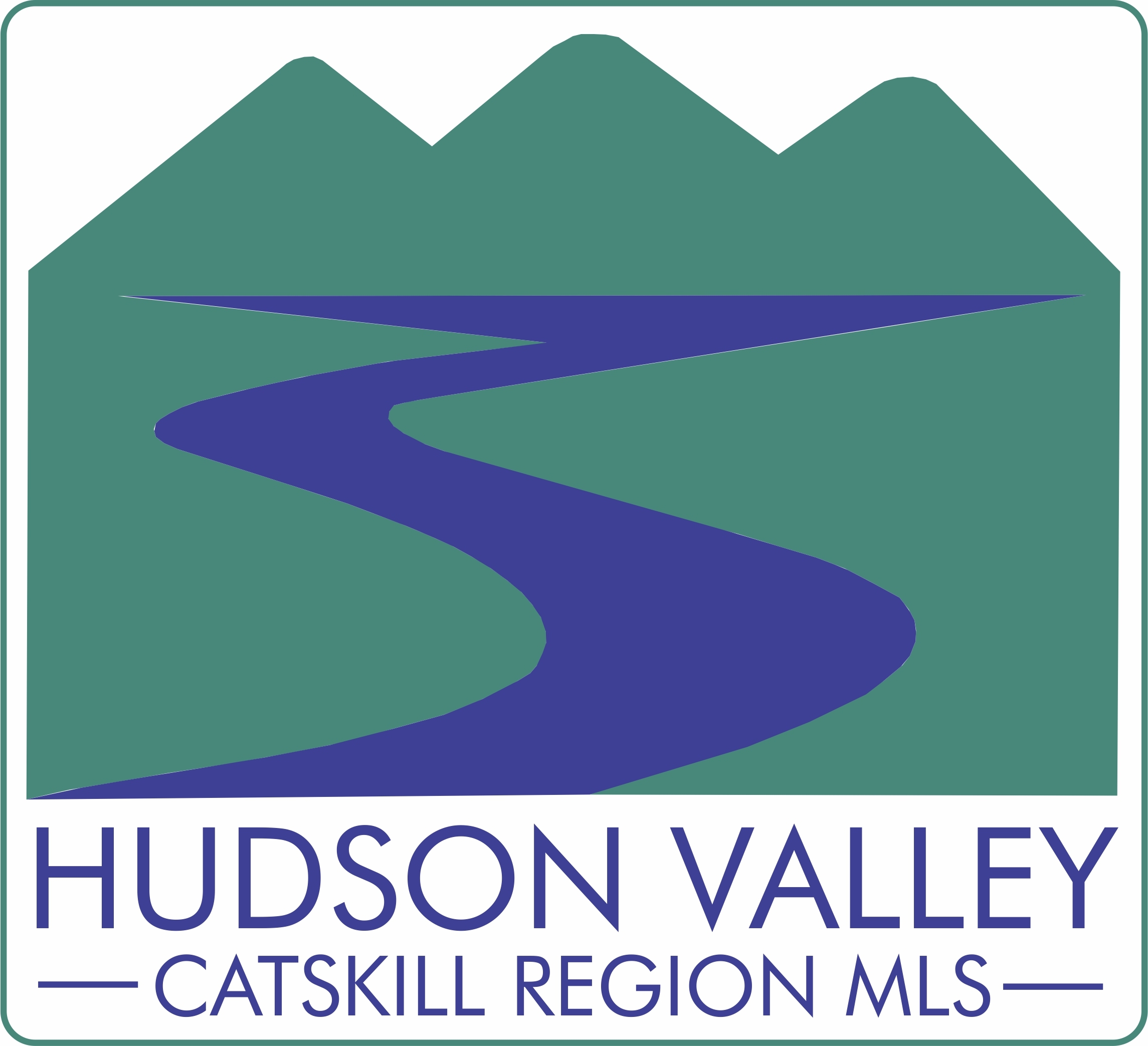If you’ve thought about, but haven’t quite gotten around to, starting your own real estate e-mail newsletter, consider these words from New York Times columnist and media expert David Carr: “Email newsletters, an old-school artifact of the web that was supposed to die along with dial-up connections, are not only still around, but very much on the march.”
Because e-mail typically has a higher return on investment of all types of digital marketing, including social media, there has never been a better time to launch a newsletter—your best vehicle for providing valuable information to, entertaining, and engaging with your clients.
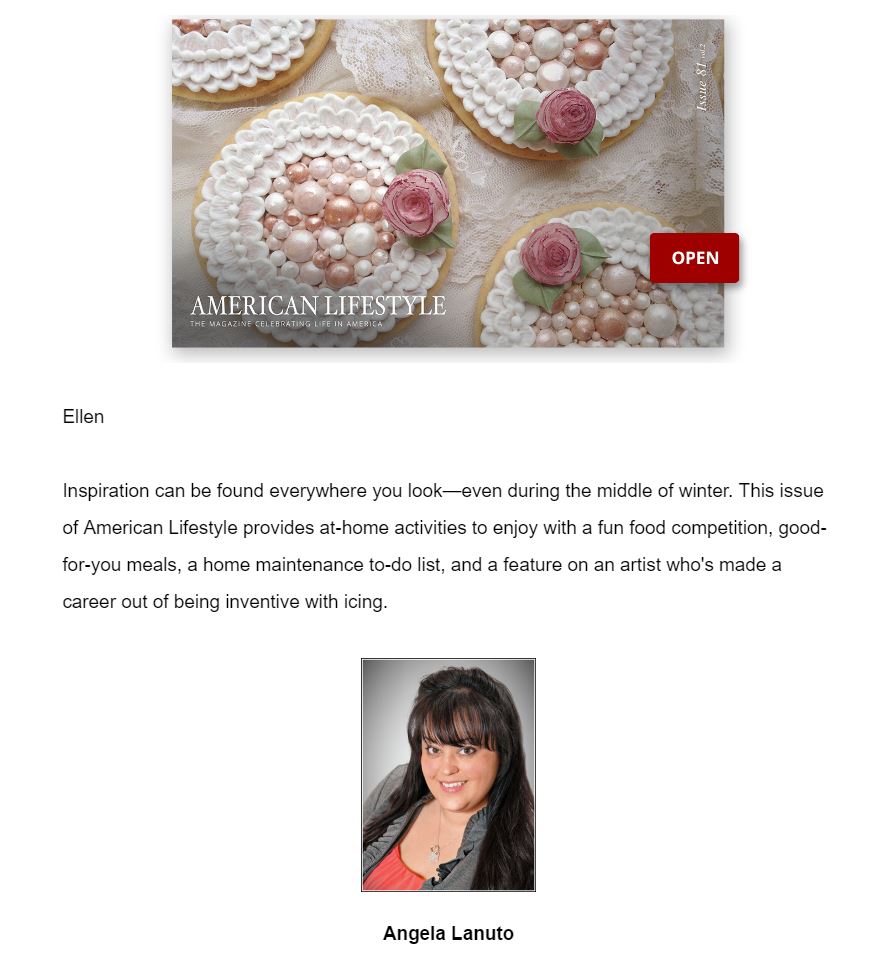
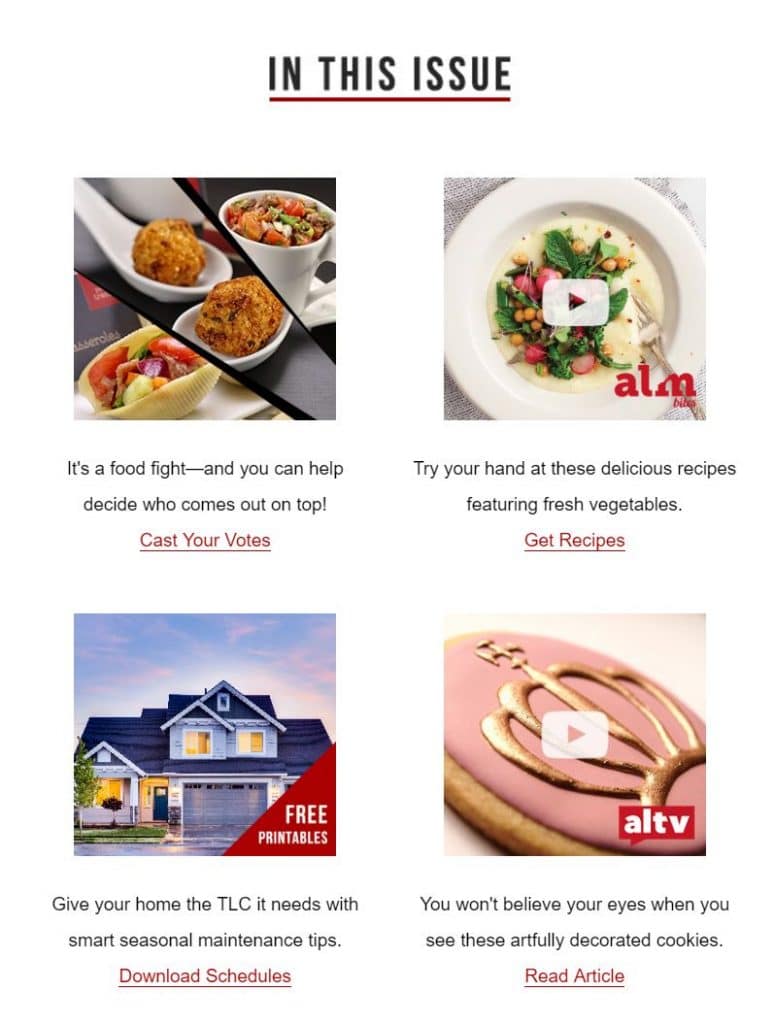
How Do I Build a Newsletter?
There are a variety of user-friendly options for automated digital newsletters; our favorites are Mailchimp, Robly, and Constant Contact. For small mailing lists—200 addresses or fewer—it’s best to stick with a free service. The sign-up process takes just a few minutes, and in less than an hour, you can build a list, set up sign-up forms, and prep your template . . .
. . . Which brings us to newsletter design. All of the above e-mail services offer dozens of free drag-and-drop templates that allow you to upload photos and logos, as well as customize colors and links to your blog, website, and social media—without the headache of creating them through graphic design software. So rather than using the default template, which is usually a bit of a snooze, take some time to browse the available templates and choose one that reflects your business. You’ll be surprised at how easy it is to create a newsletter that looks professional and is fun to read.
What Should I Include?
Your contact information. Make sure your name, number, and logo are prominently displayed at the top of the newsletter, so clients don’t have to hunt around for how to get in touch. Include links to your social media, as well; the sidebar or bottom of the newsletter are usually the best places for placement of social buttons.
Helpful tips. Most homeowners can’t get enough of practical tips they can implement on their own. Spring cleaning, easy DIYs, staging a home for sale, where to look for sources of financing, how relocating families can choose the best school—all are topics that will be of interest to your audience.
The key with DIY-style tips is to not get too complicated; simple tasks clients can accomplish in a weekend or even a few hours will be give them a greater sense of confidence and accomplishment than overly technical or complex tips.
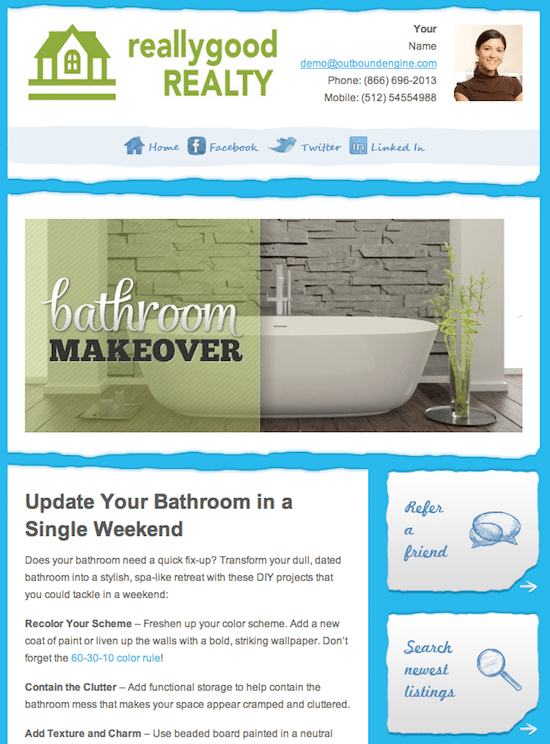
Interesting information about your local area. Show what a great place your region is to live by highlighting what makes it special. Whether it’s a fifth-grade schoolteacher whose students have created a unique project, a theater or museum celebrating its 50th anniversary, a list of the best hiking trails or places to shop, or a promising new business that just opened around the corner, including these in your newsletter helps demonstrate the desirability of the neighborhoods you serve. If you’re short on time, include a brief description and link to a local-interest piece in a regional magazine, newspaper, or blogs.
This is also a great way for you to engage with the local community. Don’t forget to send a copy of or a link to your newsletter to any locals you spotlight!
Calendar items. From city council meetings and town halls to live performances, lectures, wine dinners, and family-friendly activities, a short list of upcoming calendar items shows clients that you’re a one-stop resource for information that’s relevant to them. If you’ve got an open house or other public appearance coming up, remember to include it.
A featured listing or two. While you never want to load a newsletter with sales listings, be sure to highlight one or two of your current favorites. Even if the listings you spotlight aren’t the perfect match for the person reading your newsletter, fresh listings keep you at the top of his or her mind when it comes time to buy or sell.
Awards, recognitions, testimonials, or shout-outs you’ve received. Building trust with clients starts with strong word of mouth, so don’t be afraid to mention when you’ve been recognized for doing a stand-out job. That said, too much of a good thing will quickly lead to audience fatigue, so don’t lead with the award as your main story, and avoid including personal shout-outs in every issue of your newsletter.
How Long Should It Be?
As a general rule, keep it short! Even if you’ve got tons of great content to share, remember that most clients are busy and want bite-size information they can read on a coffee break. (You can also share overflow content in other ways, such as on your social media accounts.)
Aim for one main article of no more than 300 words, and 2 to 4 very brief (i.e., 1 to 2 sentences) secondary tidbits. A list of “What I’m Reading” links to other articles can also be useful. You don’t need to write a description for each of these; as long as the title gives a sense of the content, the hyperlinked headline will suffice.
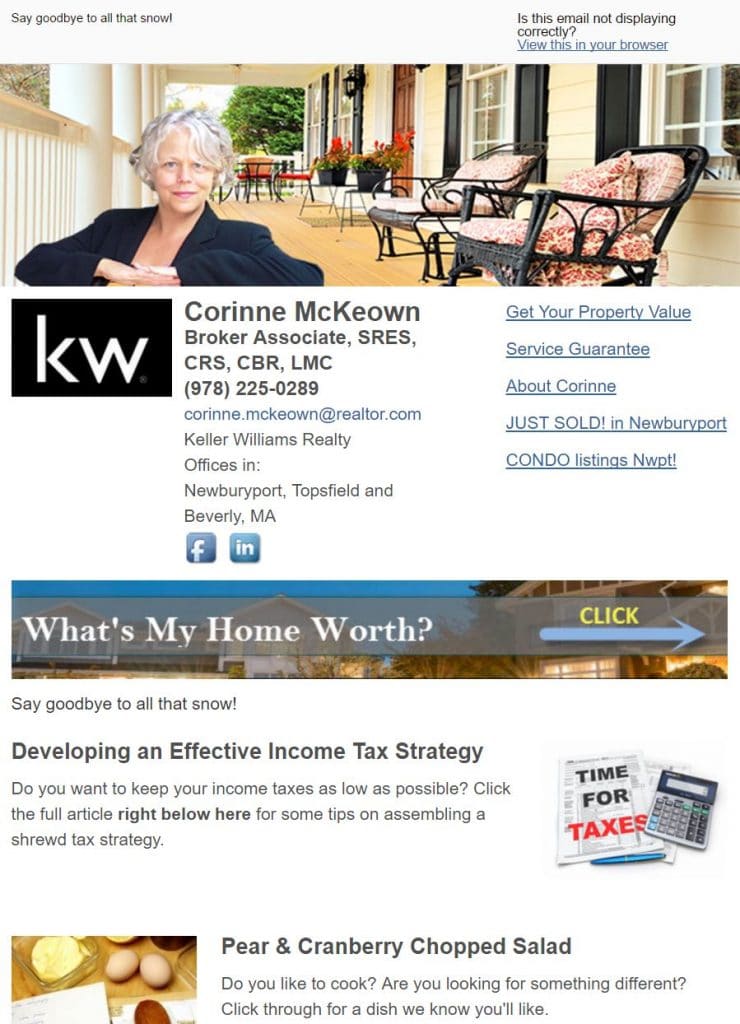
What If I Don’t Have the Time to Create a Newsletter?
For agents who are short on time or don’t want to fuss with pulling together content and images for a newsletter, custom publishing is the solution. American Lifestyle magazine and HomeActions are just two of the services that offer premade e-mail newsletter content on home and lifestyle topics; the former also produces a printed magazine that can be snail-mailed to clients. You’ll pay a monthly or annual fee to have these prepackaged newsletters or magazines customized with your company name, logo, and photo, but it’s an option to consider if you have the budget.
Marketers and copywriters in your local area can provide the same consistent service as a custom publisher—often more affordably, and with content that’s targeted toward the cities and towns you serve. Ask other local business owners who they use for their content marketing, or try running a Google search for terms like “copywriter [city near you],” “freelance writer [city near you,” or “email marketing [city near you].”
How Often Should I Send It?
If you’re a solo business owner or a small agency, or if you’re just launching your newsletter, once a month is plenty. Over time, as your business or following grows, you can consider moving to twice a month, or even weekly. Remember that pulling together the content for a quality newsletter is a time commitment, so if you don’t have a staff member to help with this, you’ll want to stick with a less-is-more approach.
Unless you have something urgent to share (e.g., your office experienced storm damage and will be temporarily closed for renovations) or are issuing a correction for something in a just-published newsletter, never send e-newsletters more than once a week for large mailing lists/agencies, or twice per month for small mailing lists/agencies. Sending e-mails too frequently directly correlates with a rise in unsubscribe rates.
Starting a real estate e-mail newsletter isn’t as difficult as it might sound, and it’s one of the best ways to keep in regular contact with your clients and gain word-of-mouth referrals. Spend a little time up-front on planning your first few newsletters, and you’ll be off and running in no time.



